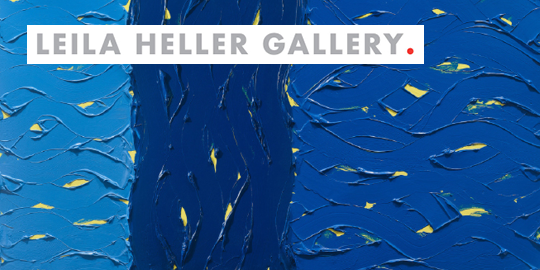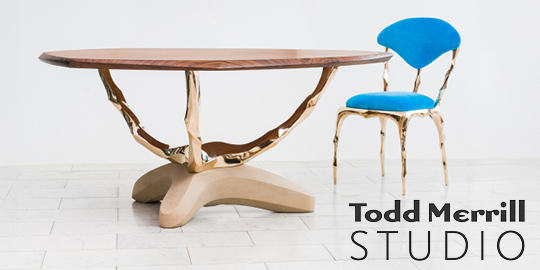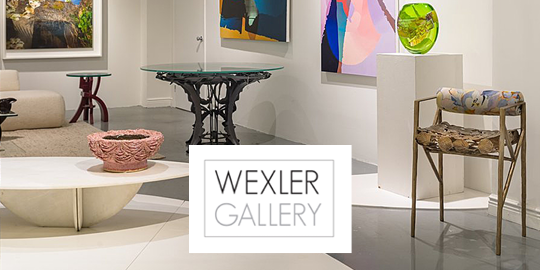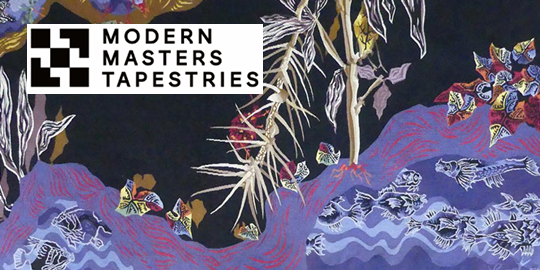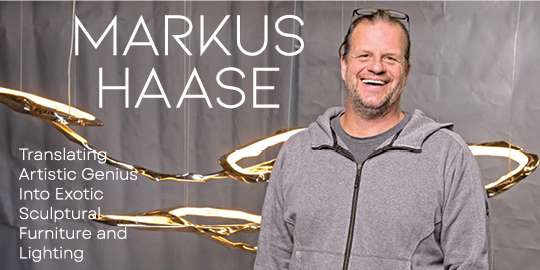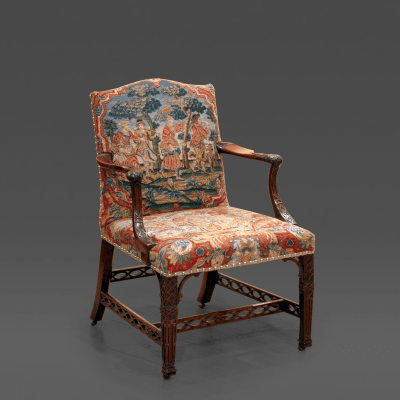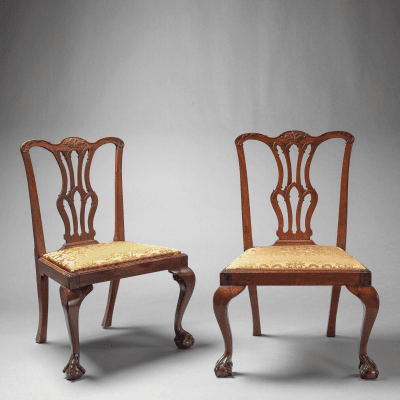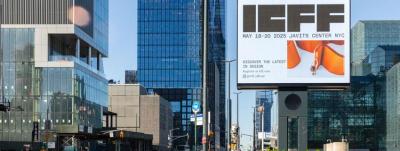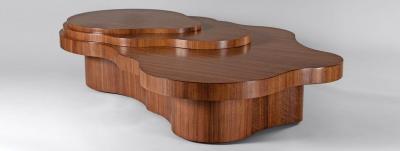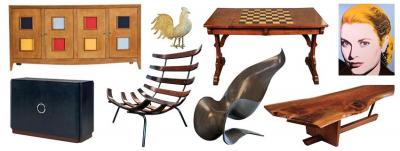Early Seating Upholstery: Reading the Evidence
This long awaited publication caps the thirty-five year career of Leroy Graves as a conservator at Colonial Williamsburg. In the 1970s, Graves, along with half-a-dozen conservators in other institutions, invented the study of American historic upholstery. He also made major contributions to the art and craft of fashioning nonintrusive (i.e., nonattached or “tackless”) upholstery systems for use on antique frames.
Early Seating Upholstery will be extremely useful to collectors unacquainted with the kind of arcane knowledge regarding upholstery frames and foundations gathered by curators and conservators. Here, they will find an introduction to the construction of antique frames and upholstery components; how to identify the evidence of original upholstery on stripped frames; and methods for reconstructing foundations, covers, and trim. Nonintrusive, dismountable upholstery treatments (Fig. 1), perhaps the most obscure practice associated with conservation, is explained in more detail than in any other publication to date.
The first two of the book’s six chapters, “A Brief History of Upholstered Seating Furniture” and “The Eighteenth-Century Upholsterer,” provide informative historical summaries punctuated with period citations. The third chapter, “Structure and Components of Upholstered Seating Furniture,” begins the substantial portion of the book. The frames themselves are explicated in terms of primary support structures, such as loose or slip seats, blocking and bracing of seat rails, chamfered and squared edges of framing members, and peaks atop the font posts. The general reader will likely not be involved in stripping and re-upholstering frames, but the chapter provides valuable insights into such intricacies.
The chapter also includes an extremely detailed description of upholstery foundation materials, covers, and trims. These components include webbing (believe it or not, a major topic of research), sackcloth and top linen, iron tacks, stuffing (grass, horsehair, Spanish moss, tow, etc.), covers (leather, embossed wool, haircloth, cotton or linen checks, and copperplate-printed linen and cotton), tapes (historically referred to as binding or lace), brass nails, and wool or silk tufts, fringes and tassels. A final section delves into the significant fixtures that determine the shapes given to upholstery foundations, ranging from simple stuffing on slip seats to stitched edges (which are highly variable) and stitched seats; to edge rolls and to cushions, pillows, and bolsters. Deemed highly speculative when they were first published and displayed in museums forty years ago, attention to such details are now accepted in museum practice and have gained headway among high-end upholsterers servicing collectors.
The fourth chapter, “Reading the Evidence,” demonstrates how original fixtures are detected on bare frames or on upholstered objects that have been modified. In other words, how do museum curators and conservators go about formulating new treatments for stripped frames? This evidence is sometimes straightforward, as in looking for the stain locations of iron tacks or for the squarish, greenish holes left by brass nails. Some details are more tricky, including identifying the tie-offs for stitched edges or stitches in extant foundations indicating the presence of quilting or edge rolls. In some cases, only the covers remain, and the frame upon which they were placed must be re-formulated (the reviewer has been involved in two projects to make modern easy chairs that fit antique needlework covers; it is quite a challenge). One of the most famous restorations profiled in this chapter is the conservation of the Mary Ball Washington easy chair at Mount Vernon. This object, which survived because it belonged to George Washington’s mother, suffered losses, breakage, and additions, but retained much of the foundation and extensive traces of the show covers and contrasting binding or tape.
Chapter Five presents studies of various forms of seating, providing a sort of cross section of types. Some of the more famous have become major monuments. Among these are the slip seats of joined side chairs from the Anthony Hay shop, where relics of slip seats recovered in an archeological dig matched the tacking evidence on extant slip seat frames. Because Colonial Williamsburg has consistently acquired English and American seating with original upholstery foundations, these can often be used to suggest treatments of bare frames by analogy. This is particularly true of backstools with or without arms, easy chairs, settees, sofas, and couches. The forensic examinations shown here go a long way to making this kind of examination accessible to a broader public.
The final chapter, “The Graves Approach for Nonintrusive Upholstery Conservation,” presents Leroy’s versions of nonintrusive copper-riveted structures and fasteners for upholstered shells attached to frames or for reinforcing collapsed period foundations (see figure 1). The copper system owes its origins to Wallace Gusler, who trained Leroy as a conservator at Williamsburg in the 1970s. Two examples are shown: a seat shell for a Salem, Massachusetts, Chippendale chair and reinforcements for an English Queen Anne easy chair with original foundation and needlework covers. This system is extremely versatile. Equivalent systems developed elsewhere with sheet plastic or epoxy impregnated linen edges also work quite well. Young conservators now have a broad range of options, due in no small part to Leroy’s experimentation.
Early Seating Upholstery joins a distinguished group of American publications that include conference reports such as Upholstery in America & Europe (1987) and Upholstery Conservation (1990), and it is, from a production standpoint, as impressive as the current English publication of record on this topic, Lucy Wood’s magnificent two-volume The Upholstered Furniture in The Lady Lever Art Gallery (2008).
Robert F. Trent is a private furniture consultant based in Wilmington, Delaware. He studied historic upholstery with Andrew Passeri in 1977 and has since specialized in the craft. Prior to consulting, he was an organizer of New England Begins (Museum of Fine Arts, Boston, 1977–1982); curator of The Connecticut Historical Society (1982–1988); and curator of furniture at Winterthur Museum 1988–1994.
All images are courtesy of The Colonial Williamsburg Foundation.
This article was originally published in the Winter 2015 issue of Antiques & Fine Art magazine, a digitized version of which is available on afamag.com. Antiques & Fine Art and AFAmag are affiliated with InCollect.com.


